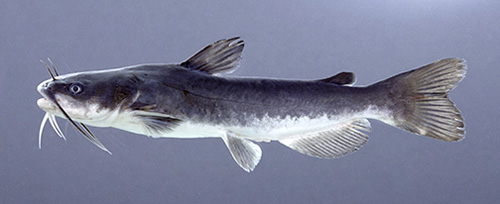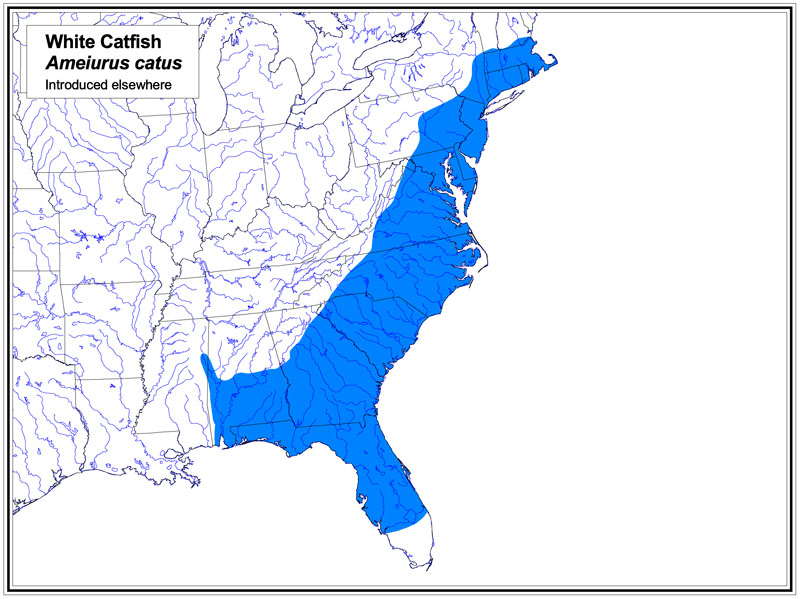
Adult from the lower Patuxent R., MD
230 mm SL
WHITE CATFISH
Ameiurus catus (Linnaeus 1758)
Identification: The White Catfish is normally gray to blue-black above – without a dark blotch at the dorsal fin base, white to light yellow below, and has a dusky black adipose fin and white or yellow chin barbels. Very large individuals are blue-black above and white or blue below. The White Catfish has a moderately forked caudal fin, and an anal fin with a short base, a rounded outline, and 22-25 rays. There are 11-15 fairly large sawlike teeth on the rear edge of the pectoral fin spine, and 18-21 rakers on the 1st gill arch. To 24 1/4 in. (62 cm).
Range: The species occurs in Atlantic and Gulf Slope drainages from the lower Hudson River in New York, to the Pascagoula River in Mississippi and south in peninsular Florida to the Peace River drainage. These species is common within its native range and has been introduced widely outside its native range.
Habitat: The White Catfish is found in sluggish, mud-bottomed pools and in open channels and backwaters of small to large rivers. It also is found in lakes and impoundments.
Similar species: The Channel Catfish, Ictalurus punctatus, Headwater Catfish, I. lupus, Yaqui Catfish, I. pricei, and Blue Catfish, I. furcatus, have a more deeply forked caudal fin. The Blue Catfish has a straight-edged anal fin, and most Channel, Headwater and Yaqui Catfishes have dark spots on a light body.
